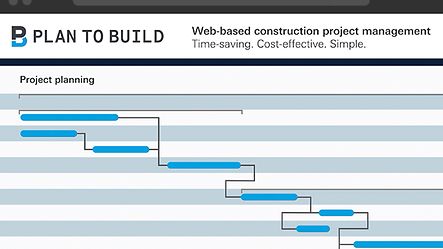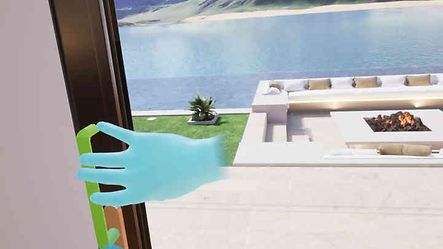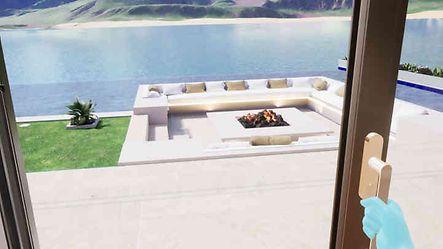We love it when a project comes together
PlanToBuild
The world is becoming ever more complex and so are construction projects. The more people involved in a project, the higher the rate of mistakes, whereas mistakes often occur due to a lack of transparency. Every mistake costs cold, hard cash and valuable resources.
PlanToBuild is a cross-trade, web-based software solution for construction project management that has been developed by industry insiders for real-life needs and is perfectly practical. PlanToBuild was developed out of operational business in order to prevent unnecessary errors on the building site. Fewer mistakes means lower costs. Faster completion means greater profits.
The simple idea behind PlanToBuild is to alleviate your workload through digitalisation. It simplifies the construction project management processes for all those involved. This makes projects much more straightforward and clearly structured. And the number of mistakes is minimised. PlanToBuild GmbH GmbH is a wholly-owned subsidiary of Schüco International KG.


PlanToBuild is a web-based and intuitive platform, which means accessible at any time, from any location and on any device focusing on communication in real time with an extensive range of cross-trade functions for planning, management and implementation.
Functions such as scheduling, task management, daily construction reports, defect management and reporting form the necessary basis. The special building blocks, however, include functions such as incident and unit management. PlanToBuild provides ready-made statements and sample letters at the touch of a button.
It facilitates the production of building models in 2D and 3D and offers to locate all the building components and units on the construction plans and track their individual status.
A thorough access management offers instant access to the fabrication, installation and maintenance dates as well as the relevant planning, installation and maintenance documents to stakeholders.
To ensure the project runs smoothly, everyone involved needs to work together and be coordinated properly. PlanToBuild has the precise functions required to ensure everyone knows who (resource management) is doing what (task management), and when (scheduling), where (unit management) and how (quality management) they are doing it. In summary: a fully functioning project.PlanToBuild is made for practitioners by practitioners, which adds up to a good combination. If you want to learn more about us and our features, kindly visit www.plantobuild.de
Watch the video now to see how PlanToBuild is already making a difference for our customers:

Virtual Construction Lab

The Schüco Virtual Showroom is designed with the user in mind, and as such the team at VCL has sought the feedback from sales teams in Schüco showrooms around the globe to better understand what their needs are and to refine the tool so that it incorporates seamlessly into their sales strategy. Recently, the residential environment in SVS has gotten an overhaul to improve its user experience (UX) and showcase the latest door, window, and facade offerings. In addition, VCL has implemented a range of quality of life enhancements and bug fixes to ensure SVS is prepared for the next stage of its development.
The near future will see the incorporation of a variety of new elements into SVS. Driven by sales team feedback, the team at VCL will introduce features that make it easier for users to navigate each VR environment and features that allow for more advanced comparisons between system options. For UX, a new guide system complete with a mini-map will help users keep track of where they are in each VR setting and where different door/window/facade systems are located. Updated virtual hand models will improve user interaction with the VR operable units, reducing the need to reach as far for each window or door handle. The sales teams stressed the need to compare “apples to apples,” and as such SVS will be introducing a more robust comparison tool across its VR environments. The comparison tool will vary depending on location and system, but in general it will allow for A/B comparison of two options at a time, with a dividing line letting the user see the difference side by side. SVS will also allow for comparison of different hardware, finishes, and opening types in its window systems. VCL is committed to adding in new systems for swapping and comparison and is also working on a procedure specific exploded view for all units so that a user can see the difference on both the outside and inside of a given system. The final improvement scheduled for a near future release is the implementation of acoustic testing in each showroom environment based on real life engineering calculations.


These improvements are all slated for the near future and are in the works, but in addition VCL is looking farther into the future to anticipate advances in VR that will allow for even more new features. SVS will one day include a regional adaptive system population, meaning that users can customize their version of SVS to only feature Schüco products available in their region. This would let sales teams focus the experience for their clients and ensure no confusion in the products they are shown. Many developers are looking into a multi-user input, which would allow a salesperson to go into SVS alongside their client and could even allow for VR conference calls for remote customers.
Finally, inclusion of a thermal view in each system would go hand in hand with the acoustical testing to give clients a broader understanding of the performance of each system, displaying a false color analysis over a given system’s cross section.
With all of these ideas in the works, the team at VCL is committed to making the Schüco Virtual Showroom the most advanced VR experience in the facade industry. These changes will take time to implement, but with the continued feedback of users from Schüco’s various sales teams SVS will develop in a manner that meets the present needs of the market and anticipates the future potential of Virtual Reality.